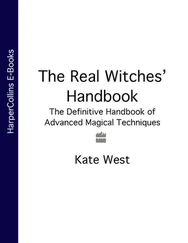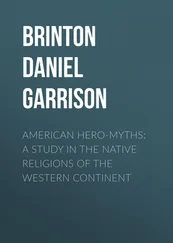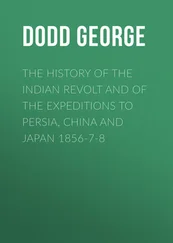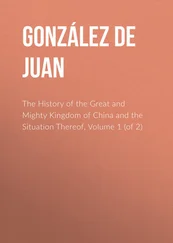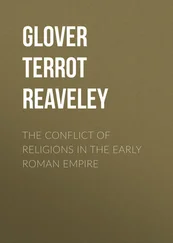ibidem-Press, Stuttgart
Contents
Preface Preface
About the authors About the authors Professor Mou Zhongjian 牟钟鉴 was born in 1939 in Yantai, a beautiful coastal city of Shandong Province. He studied in the Department of Philosophy at the prestigious Peking University. He devoted himself to the history of Chinese philosophy and was awarded his Master of Arts degree. Then, he spent more than 20 years (1966–1987) at the Institute of World Religions at the Chinese Academy of Social Sciences (CASS), where his research focused on the Chinese philosophy and religions. In November 1987, he began teaching at Minzu University of China (i.e. Central University for Nationalities). Mr. Mou has been appointed to the highest level of professorship and is responsible for supervising Ph.D. programs in the University’s Department of Philosophy and Religious Studies. He has been rewarded with prestigious titles such as the National Outstanding Teacher Award. Prof. Mou’s major publications include: Lüshi Chunqiu yu Huainanzi sixiang yanjiu 《吕氏春秋》与《淮南子》思想研究 (An intellectual inquiry into The Spring and Autumn of Master Lü and The Master Huainan ); Zoujin Zhongguo jingshen 走进中国精神 (Walking into the Chinese spirit); Ruxue jiazhi de xin tansuo 儒学价值的新探索 (Ground breaking explorations of the value of Confucianism), and so forth. Professor Zhang Jian 张践 works for the famous Renmin University, or the People’s University of China. He is also a Guest Research Fellow at the MOE’s Research Center for Buddhism and Theories of Religious Study and a Guest Professor at Minzu University. The International Confucian Association offered Prof. Zhang membership of Council and Directorship of the Committee of Dissemination. In addition, he serves as the Vice President of the China Society for Practical Learning. Prof. Zhang is a leading scholar in the fields of history of religions in China and history of Chinese philosophy. He has published numerous monographs such as: Zongjiao, zhengzhi, minzu 宗教·政治·民族 (Religion, politics, and ethnicity); 中国民间宗教史 (History of popular religions in China); and Dexing yu gongfu—Zhongguo ren de xiuyang guan 德性与功夫——中国人的修养观 ( A priori virtues and a posteriori moralities: Chinese ideas of self-cultivation).
About the translator About the translator Chi Zhen, Ph.D. (2007), National University of Singapore, is Associate Research Fellow at Shanghai Academy of Social Sciences (SASS). He has published monographs and articles on Chinese intellectual history. He devotes himself to the English translation of academic works authored by highly intellectual Chinese scholars. His latest translation work was Marxism and Religion (Brill, 2014).
Major Dynasties in Chinese History
Chapter Six Religions in Liao, Song and Jin Dynasties and Western Xia (the Tangut Empire) Chapter Six Religions in Liao, Song and Jin Dynasties and Western Xia (the Tangut Empire)
An Overview
Primitive Religions and Flourishing Buddhism in Liao
1) Traditional Khitan beliefs and the tendency of Sinicization
2) The prevalence of Buddhism and its characteristics
Religions in Song Dynasties: Syncretism and Evolution
1)Revising and perfecting the sacrificial codes applicable to the state religion
2) The equal importance of meditation and doctrine in Buddhist practice and the syncretism of Buddhism and Confucianism
3) Thriving Daoism
4) Manichaeism, Islam, Judaism and Zoroastrianism
Religions in Jin dynasty
1) Conventional customs of the Jurchen people and the creation of institutions with respect to the Jurchen state religion
2) The growing popularity of Buddhism
3) The emergence and growth of new Daoist schools in areas north of the Yellow River
Religions in the Western Xia Dynasty
1) Primitive sorcery and the cult of spirits
2) The introduction and growth of Buddhism
3) The Tangut Tripitaka and its significance
The second diffusion of Buddhism in Tibet and the formation of Buddhist sects
1) Well-known Buddhist figures and their contributions in the Houhong (Second Diffusion) Period
2) Sects of Tibetan Buddhism and their theories
Chapter Seven Religions in Yuan Dynasty: A Boom in Faith
An Overview
The Reconstruction and Characteristics of Official Religious Rituals
1) The grand ceremony of offering sacrifices to Heaven
2) The (Royal) Ancestral Temple
3) The Imperial shrine for Earth and Grain gods
4) The Imperial ceremony advocating the Kingship of Confucius
5) Offering sacrifices to gods of mountain, river and sea
6) Traditional Mongol customs
The development of Chinese and Tibetan Buddhism and the practice of the “Imperial Preceptor”
1) The Mongol aristocrats’ adoration of Buddhism
2) The development and administration of Buddhism in Yuan
3) The unique practice of the Imperial Preceptor in Yuan
4) The growth of Buddhist sects in the Central Plains
5) Buddhism and Yuan culture
The Introduction and Growth of Theravada Buddhism in Yunnan
1) The introduction of Theravada Buddhism into Yunnan
2) Theories and sutras of Theravada Buddhism
3) The sects, monastic hierarchy and monasteries in Theravada Buddhism
4) Theravada Buddhism and the Dai society
The Prevalence and Popularity of All Truth Daoism in the Lower Reaches of Yangtze River
1) Qiu Chuji and the rise and fall of All Truth Daoism
2) The flourishing Way of Orthodox Unity in the lower reaches of Yangtze River
3) The growing popularity of Jingming Dao in the lower reaches of Yangtze River
The Resuscitation of Yelikewen (Erkeun/Arkagun), Islam and Judaism
1) Yelikewen (Erkeun/Arkagun): The re-introduction of Christianity into China
2) The rapid growth of Islam in Yuan
3) The development of Judaism in Yuan
The Rise of the White Lotus Sect and Social Changes in Late Yuan Dynasty
1) The birth and growth of the White Lotus Sect
2) The White Lotus rebellions in the late Yuan
Chapter Eight Religions in Ming Dynasty: The Pluralistic Syncretism and Popularization
An Overview
Development and Perfection of Rituals and Ceremonies of the Patriarchal Religion
1) The grand ceremony of sacrificing to Heaven and Earth
2) Sacrifices to the Earth and Grain gods, the Sun and Moon, the Divine Farmer, the Goddess of Silkworms and the God of Matchmakers
3) Altars of various deities and Earthly and Celestial gods
4) Sacrifices to Emperors, holy Masters, men of virtue and outstanding Ministers of all ages
5) The Royal Ancestral Temple
6) Funerals and related dressing codes
Buddhism in the Syncretism of the Three Great Teachings
1) Ming’s religious policies and administration of Buddhism
2) Tsongkhapa’s religious reform of Tibetan Buddhism
3) Two great branches of the School of Meditation and their representative figures
4) Other Buddhist schools
5) The Great Four Buddhists in the late Ming dynasty
The Secularization of Daoism and the Growing Prosperity of the Daoist School of Fulu (Mysterious Symbols, Drawings and Incantations)
1) The royal family and Daoism
2) Two major Daoist schools: The Way of Orthodox Unity and All Truth Daoism
Читать дальше





